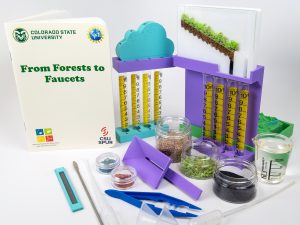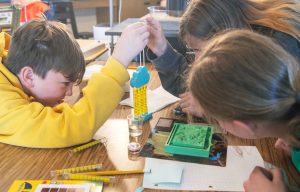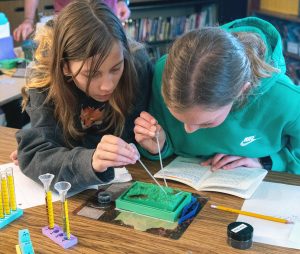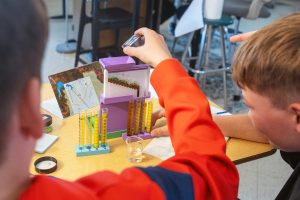What affects the quality and quantity of water we drink in Colorado?
The storyline in this STEM kit takes students on an exploration of different aspects of the water cycle as they use a physical model to measure infiltration and runoff in forested and burned trials. Students then use a topographic model to analyze how precipitation patterns cause water scarcity on Colorado’s eastern slope and learn how people divert water under the Continental Divide. The kit mimics the science of Dr. Tim Covino’s lab at CSU!
Applicable Next Generation Science Standards
Science and Engineering Practices
- Developing and using models
- Analyzing and interpreting data
- Using mathematics and computational thinking
- Obtaining, evaluating, and communicating information
Crosscutting Concepts
- Patterns
- Cause and Effect
- Scale, Proportion, and Quantity
- Systems and System Models
- Stability and Change of Systems
Disciplinary Core Ideas
MS-ESS2.C The Roles of Water in Earth’s Surface Processes Water continually cycles among land, ocean, and atmosphere via transpiration, evaporation, condensation and crystallization, and precipitation, as well as downhill flows on land.
MS-ESS3.A: Natural Resources Minerals, fresh water, and biosphere resources are limited, and many are not renewable or replaceable over human lifetimes.
HS-ESS3.A: Natural Resources All forms of energy production and other resource extraction have associated economic, social, environmental, and geopolitical costs and risks as well as benefits. New technologies and social regulations can change the balance of these factors.
HS-ESS3.C Human Impacts on Earth Systems The sustainability of human societies and the biodiversity that supports them require responsible management of natural resources.
Class Requirements
- 6th grade and up
- Moderate teacher preparation
- One to two class periods
- 30 students or less at a time
- Science notebooks
- Sink





